Stereoscopic cultivation of vegetables is based on the local natural conditions and the requirements of various vegetables for environmental conditions, making full use of the difference in the length of their growth period, the difference in the height of the plants, and the environmental differences in soil nutrients, humidity, light and moisture requirements. Intercropping and intercropping, forming a reasonable layered composite three-dimensional structure, maximizing the production potential of land and crops, and obtaining more agricultural products per unit area at the same time. According to the position of the vegetable three-dimensional cultivation group, it can be divided into ground stereo and spatial stereo. Different crops on the ground are planted on the same ground plane, but the upper part of the ground is three-dimensionally distributed. This cultivation is actually the intercropping and intercropping in traditional agriculture . The spatial three-dimensional is the use of certain cultivation facilities, different vegetables are planted on different levels such as bed tops, hanging pots, hanging bags, column type, etc. This paper mainly introduces the three-dimensional cultivation of the ground.
First, the advantages of three-dimensional cultivation
   1. Three-dimensional cultivation is conducive to improving the utilization of light energy. The survival and development of plants are inseparable from the sun. More than 90% of the total dry matter of plants comes from photosynthesis, and only 5% to 10% comes from the soil. Currently solar energy utilization countries in the world, only 0.3% to 0.4%, if we increase the energy utilization rate to 1% to 2%, production may more than double. Total photosynthetic products mainly affected leaf area, net assimilation rate, affecting photosynthesis of time. Among them, the leaf area is the most important, and increasing the leaf area of ​​the vegetable group within a certain range can increase the yield of vegetables. But the plane leaves cultivated area limited increase beyond a certain limit, but each shade production cut, if three-dimensional cultivation, poor use of space stratification, leaf area index up to 5-6 times the land area, the yield can be increased significantly.
   2. Three-dimensional cultivation can improve land utilization and increase the multiple cropping index. The multiple cropping index is high and the land utilization rate is also high. The multiple cropping index is restricted by the regional climate and the length of the crop growth period. If the three-dimensional cultivation is used, the crops will have a symbiotic period, which is equivalent to shortening their growth period, increasing the number of planting times and increasing the multiple cropping index.
   3. Conducive to increasing planting density. Reasonable close planting is an important measure to increase production, because the yield of crops is composed of the number of plants per plant area and the yield per plant, while the planting density is restricted by the maximum leaf area coefficient, while the leaf area of ​​the three-dimensional cultivation is larger than the single. Because it is cultivated in a plane, it can greatly increase the yield.
   4. Three-dimensional cultivation is conducive to the "edge advantage". Generally, crops grown on the edge of the field and on the edge of the ditch are well ventilated, have good growth, and have high yield. For example, high-cultivation, low-sleeve, high-stalk crops reduce plant spacing, and dwarf crops increase row spacing, so that high-stalk crops can play a side-by-side advantage, and mutual benefit can increase production.
Second, the principles that should be mastered in three-dimensional cultivation
   1. Vegetables that absorb different soil nutrients and different root depths are rotated or intercropped, such as leafy vegetables with more nitrogen fertilizer, roots, stems, or more fruits and vegetables that consume more potassium fertilizer, and deep roots. Solanum, melon, beans and shallow-rooted leafy vegetables, onion and garlic are rotated or matched.
   2. Plants of the same family and genus have common pests and diseases. It is not suitable for continuous cropping. Crops between different families should be selected for rotation.
   3. Legume crops have root nodules, which can fertilize the soil. Onion and garlic have certain bactericidal effects, so they can be rotated or intercropped with other vegetables. Aquatic crops can inhibit dryland weeds and underground pests and diseases, and are good precursors for other vegetables.
   4. Hi-glare melons, eggplants, tomatoes, cowpeas, lentils, kidney beans and low-light onions, alfalfa, ginger, garlic, parsley, lettuce, sage, fennel, high-stalk erect or scaffolding and dwarf collapse The cooperation of the ground, such as corn and soybeans, potatoes, Chinese cabbage, and intercropping.
   5. Long-term high-stalk crops and short-lived climbing plants, intercropping, and later use the stems of high-stalk crops as brackets for climbing crops, such as flue-cured tobacco, peas, corn, kidney beans, beans, Peas, etc., or use the previous bracket between the set of melons or beans, such as watermelon, melon, loofah, bitter gourd, cowpea and so on.
   6. Reasonably arrange the structure of the field group, deal with the contradiction between the main work and the vice work space, and strive for water and fertilizer. Under the premise of ensuring the density and output of the main work, the density and output of the by-products should be appropriately increased to minimize the time of symbiosis before and after. Or take some corresponding cultivation techniques to adjust the relationship between the master and the assistant at any time to promote their development in mutual benefit.
Third, the main mode of ground three-dimensional cultivation
   1. Three-dimensional cultivation of food and vegetables
( 1 ) Corn carrots: When you start the corn, you will spread the carrots, harvest the green corn from August to September , and collect the carrots from November to December .
( 2 ) Corn cover anti-season cabbage: 2 rows of corn in small ridges , 3 to 4 rows of cabbage in ridge ditch , corn is warm and light, and Chinese cabbage is slightly weaker than weak light. ( 3 ) Corn sets of kidney beans or vegetable peas: corn stalks for bean stents can save labor and materials, and kill two birds with one stone.
   2. Three-dimensional cultivation of economic crops and vegetables
( 1 ) Flue-cured tobacco with garlic and vegetable peas: In the late harvest of tobacco leaves , the ridges are flattened in September , and the garlic is fertilized . After the tobacco leaves are harvested , the tobacco stalks are cut off, and the autumn peas can be directly sown in the ridges and stalks. Bracket, then pull a few spurs and let the peas climb.
( 2 ) Sugarcane ground early tomato, early pepper, early cucumber, edamame, dwarf bean, etc.: Use the gap before the sugar cane is sealed to interplant a small vegetable, and the vegetable will be harvested after large harvest, which will not affect the growth of sugarcane.
( 3 ) Three- dimensional cultivation of orchard sets of vegetables: planting cabbage, radish, peas, broad beans, etc. between the rows of deciduous fruit trees or newly planted young fruit trees in winter and spring, and in the summer and autumn, it is possible to interplant with ginger, cucumber and pumpkin which are slightly shade-tolerant.
   3. Three-dimensional cultivation of vegetables and vegetables
( 1 ) Spinach set of eggplant, pepper: Spinach was planted in February , and eggplant and pepper were planted in March , and spinach was first collected.
( 2 ) Cauliflower sets of eucalyptus, cauliflower and late-maturing large-scale flowers, a row of cauliflower and a row of eucalyptus, first harvested broccoli and then received cauliflower.
( 3 ) Lettuce set pepper, first plant lettuce, after planting pepper, lettuce can play the role of frost protection in winter and spring.
( 4 ) Kidney beans, bitter gourd, and cucumbers with high stalks on the leek, but control the reasonable density.
( 5 ) Under the scrim of the loofah, the celery, lettuce, and green onions of Xiyin are planted.
AGLEX is specialized in led grow lights for indoor plants. L Series 700w LED Grow Light Bar is designed for marijuana, shorten growing cycle but increase quantity and quality. PPE 2.8-3.0 μmol/J, results in 2.5-2.8 g/w.
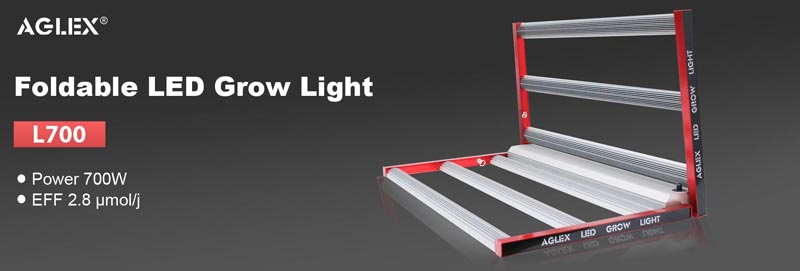
L700 LED Grow Light Bar Features:
- FLEXIBLE FOLDING & EXTREMELY LARGER GROWING AREA - Compared with other plant led grow lights, the outstanding feature of L700 grow lamp is that it has a larger irradiation area. This is not only due to SMD lamp beads, but also because of its special appearance design. It contains 1440pcs led beads and itself has a large area . Patent folding up design, not only meet different lighting requirements, and can enlarge lighting area. Both of side can be freely folded 0-90°, easy to use. Perfect coverage is 6x6ft at 16".
-
MAXIMIZE YIELDS & CROP QUALITY - AGLEX 2020 newest L700 LED Grow Light Bar uses upgraded SMD 3030 LEDs, higher light intensity, less light decay, PPE up to 3.1 umol/J, makes you get 30% higher yield compare with the old plant grow lights, can get max yield at 2.8g/watt, only consumes 700w with 1440 LEDs , help you achieve maximum quality and quantity.
-
FLEXIBLE DIMMABLE Full Spectrum DESIGN - Equipped with 0-100% dimming knob, freely adjust the intensity of L700 grow light to meet plants need at different growth stages. It is definitely very convenient to use, turning it down when vegging. In flowering, you just leave it on 100%, allowing plants flexibility to obtain perfect growth performance.
-
UPGRADED FULL SPECTRUM & Extra Function - Consist of full spectrum White 3500K 5000K, Red 660nm and IR 740nm, infinitely close to natural sun light. Excellent spectrum applies to the whole stages of indoor growing plant from seeding to flowering. Speeding up vegging, blooming and fruiting, suit for plant`s full-cycle growing. L700 LED grow lamp, born for Big Buds, widely used for commercial, home garden, grow tent, grow room, hydroponic, soil growth.
-
What Do You Get - Newest L700 Foldable & Dimmable LED Grow Light Bar, Hanging Kits, User Manual, Our 3 years standard warranty plus 30 days money back guarantee, and 7/24 satisfying customer services. If there is any question or concerns, please feel free to contact us. We will help you with great pleasure!
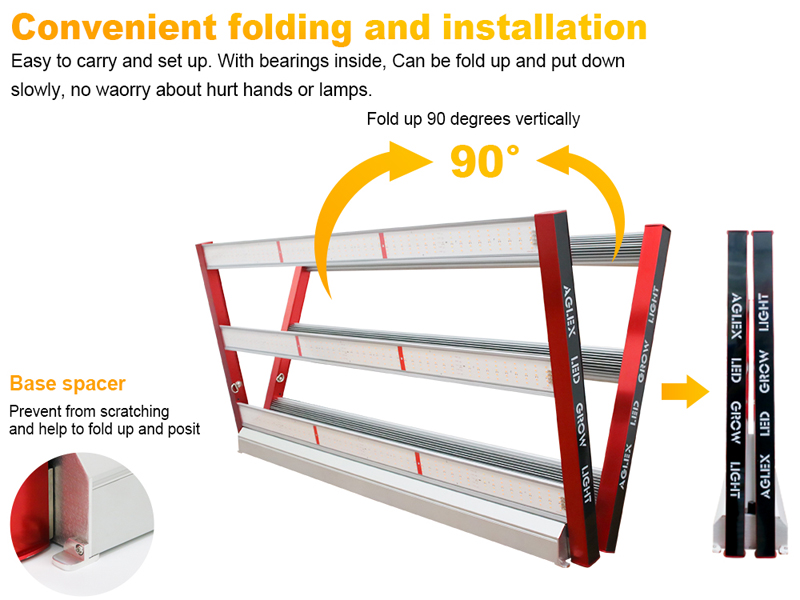


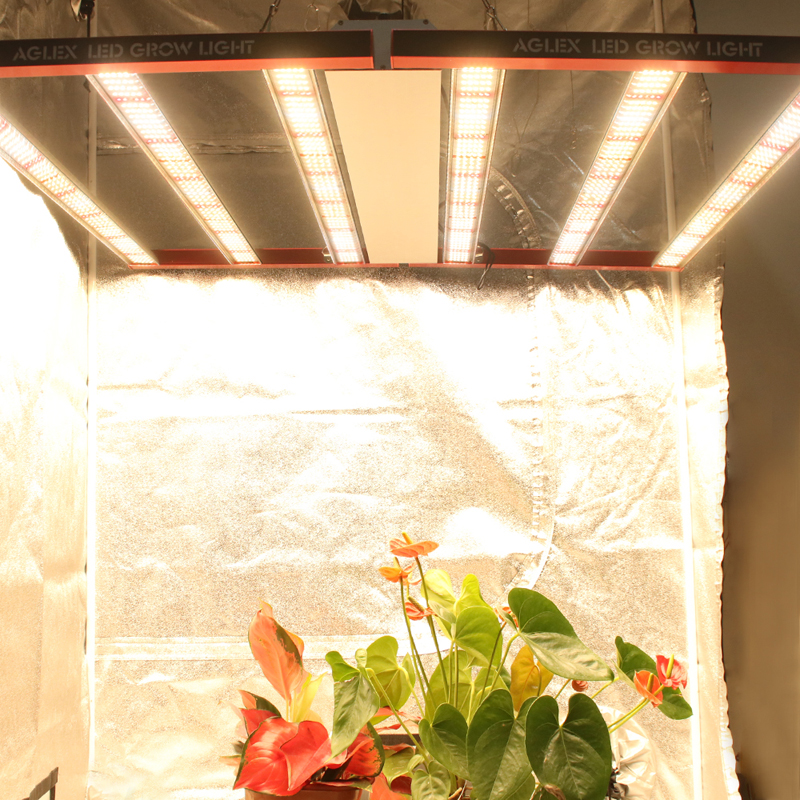
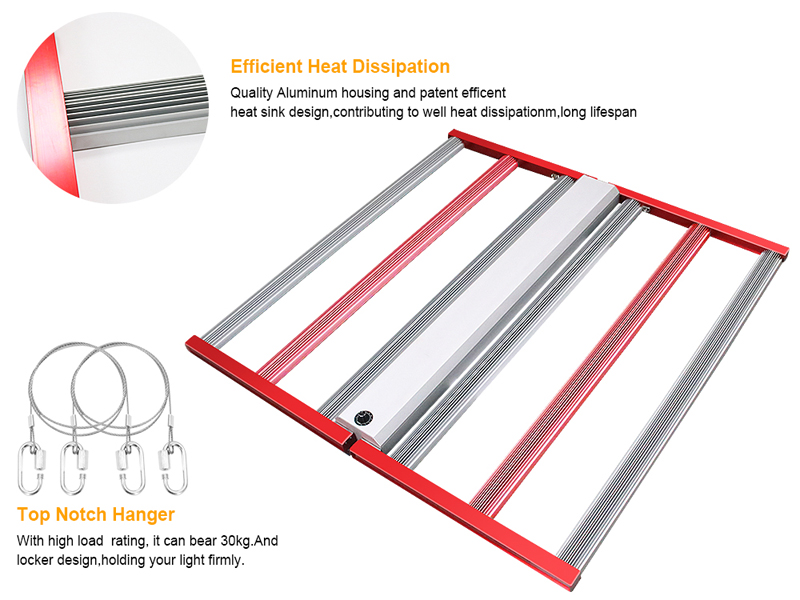
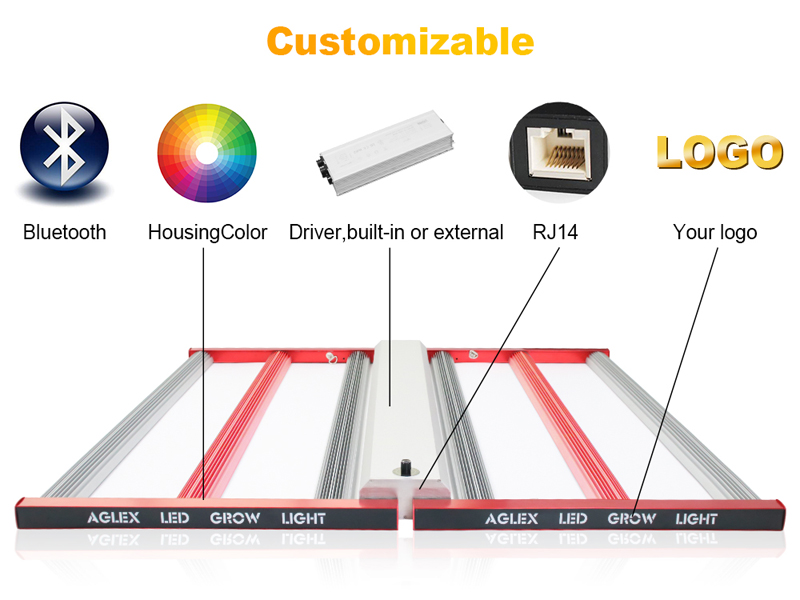
Widely used in greenhouse for medical, government, commercial, military and agriculture.
Welcome to contact us for more details. >> CONTACT
Full Spectrum LED Grow Light, LED Grow Light Bar, Grow Light Bar, Spider LED Grow Light, AGLEX Grow Light
Shenzhen Ameri Technology Co., Ltd. , https://www.aglexz.com
![<?echo $_SERVER['SERVER_NAME'];?>](/template/twentyseventeen/skin/images/header.jpg)